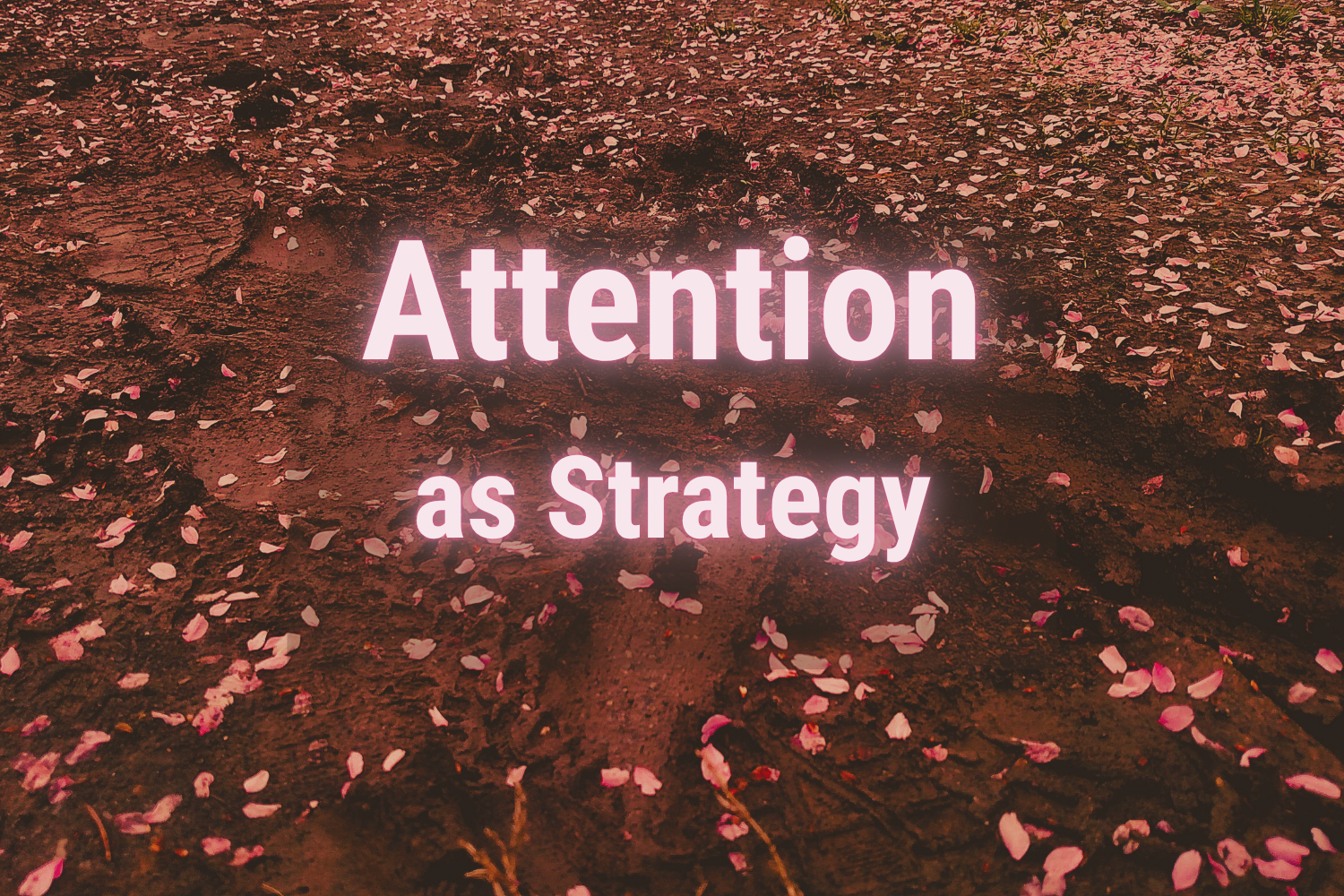Attention as Strategy
What we choose to notice becomes who we are.
The Problem with Modern Attention
In marketing, “attention” has become a transaction — something to buy, chase, or steal. Brands compete for seconds of screen time while forgetting that attention isn’t a commodity. It’s a relationship.
Real attention can’t be bought. It’s earned by showing you care enough to notice things others overlook — patterns, emotions, and the quiet needs that algorithms can’t measure.
The Shift from Reach to Resonance
Reach doesn’t guarantee connection.
You can reach millions and still not be remembered.
Resonance happens when something feels seen — when a message meets someone where they are, not where analytics say they should be. Brands that understand this treat marketing less like performance and more like conversation.
Attention becomes strategy when you design for understanding, not just visibility.
What Paying Attention Really Means
Paying attention is creative work. It’s the act of listening deeply enough to respond with meaning, not noise.
It means noticing the gaps between what people say and what they actually need.
It means recognizing that simplicity is not a lack of ideas but the presence of focus.
It means treating every touchpoint like an opportunity to make someone’s day a little easier, clearer, or more human.
Building Attention into Strategy
Attention-driven brands approach marketing differently:
They slow down. You can’t notice what you’re rushing past.
They ask better questions. Curiosity reveals clarity.
They connect systems to stories. Strategy should serve meaning, not bury it.
They measure impact, not activity. Metrics matter, but only if they reflect truth.
When a brand pays attention — to its audience, to its craft, to its own tone — strategy becomes less about optimization and more about empathy.
Attention as a Competitive Advantage
Attention is scarce because it’s expensive.
Not in money, but in energy.
The brands that earn it consistently are the ones that invest in seeing. They understand that marketing is really pattern recognition — reading the signals others miss.
When attention becomes your strategy, you stop chasing trends and start designing systems that last.
Closing Reflection
Attention is the quietest strategy there is.
It’s also the hardest to fake.
In a world obsessed with reach, the brands that win are the ones that remember what it means to look closely and care enough to keep doing it.
FAQ
-
It means designing marketing and communication systems around genuine awareness — focusing on what matters instead of everything at once.
-
Awareness is noticing something. Attention is staying with it long enough to understand it.
-
Because attention builds trust. When a brand listens and responds with intention, it earns long-term loyalty instead of short-term clicks.
-
Yes — systems built on clarity and focus scale better because they reduce waste. Efficiency follows understanding.
-
By slowing communication cycles, simplifying messaging, and asking better questions before creating new content.
-
Speed. Most marketing teams move too fast to notice whether their message still means anything.
-
Qualitatively: engagement, response depth, and retention. Numbers help, but meaning matters more.
-
Both. Creativity requires noticing what others don’t. Strategy requires knowing what to do with it.
-
They design systems that amplify clarity instead of volume. Every message feels deliberate.
-
Start by noticing your own communication habits — where you rush, where you repeat, and where you might pause instead.
